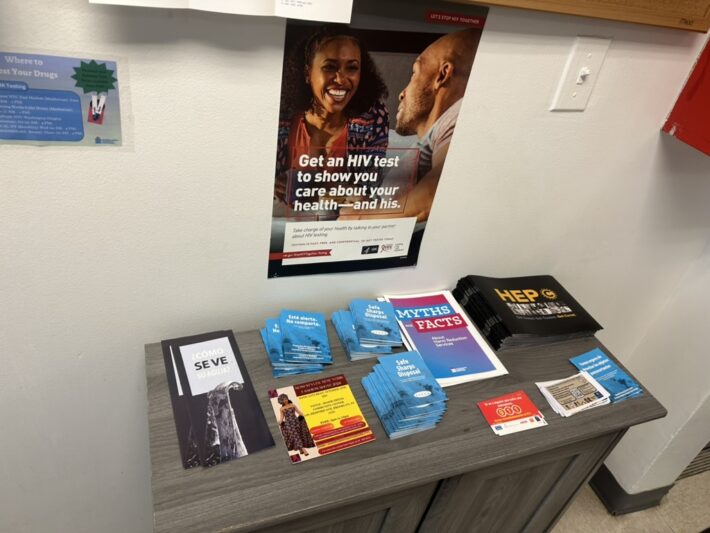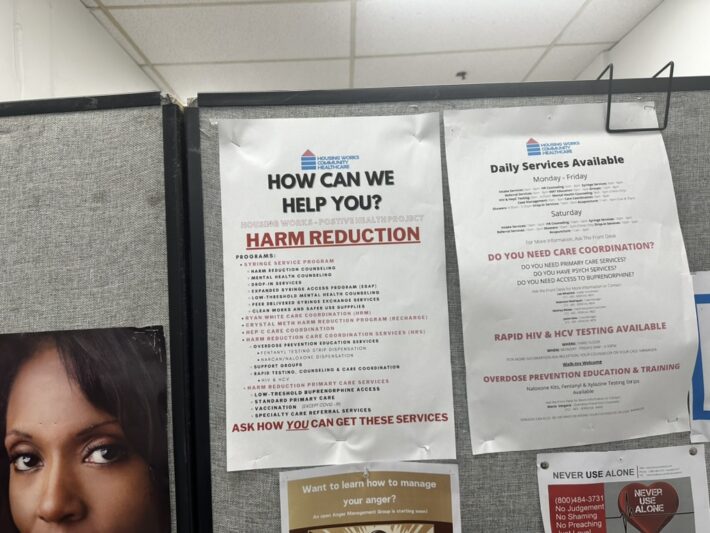
Substance abuse continues to be an issue in Midtown Manhattan, as the area struggles to reduce overdoses and drug-related crimes. But New York City and state elected officials are proposing new policies to help curb the crisis.
One effort is State Senator Gustavo Rivera’s co-sponsored bill to open new Overdose Prevention Centers (OPCs) throughout New York State over the next five years, starting sometime in 2025. Although the proposal doesn’t specify where the centers would operate, there’s funding for 10 programs.
“We should embrace harm reduction measures that actually save lives and protect our communities, instead of criminalizing them,” Rivera said.
In addition, Mayor Eric Adams announced last month that the city will invest $50 million into New York City treatment efforts using years-old settlement funds won in legal battles against pharmaceutical companies. The funding will also support medical research on substance abuse and overdose prevention centers.
While some New York City neighborhoods have managed to curb steep overdose rates through building OPCs, like Harlem and Washington Heights, the effort to achieve them has been harder in Midtown Manhattan, which contains a transient community stitched together by major transportation hubs.
Housing Works’ Positive Health Project on West 37th Street is one of the few Midtown harm reduction sites, meaning a center where substance abuse treatment is not based on abstaining from drug use entirely. Since 1995, the New York City Department of Health and Mental Hygiene has funded the program and will receive some of the city’s latest settlement funds.
But Housing Works’ program has been struggling in its latest goals to expand into effective overdose prevention centers.
“We have the space. We have a plan. We don’t have the funding to actually support the development of it,” said Max Sepulveda, who manages harm reduction services for Housing Works. “We’re waiting on officials to let us know.”
Many of the clients at Housing Works have overlapping issues from substance abuse and homelessness to untreated mental illness. And a number of services are provided, including HIV testing, clean syringes, wound treatment from needle punctures, naloxone to reverse drug overdoses, mental health services and support groups. But the organization still needs more resources, said Sepulveda, like drug testing kits that identify substances laced with other toxic chemicals, which can be deadly in certain combinations.
While some criticize overdose prevention centers as enablers of drug use, there are advocates who believe such programs provide supervision and treatment options.
“People have different layers of strength and weaknesses,” Sepulveda said. “In harm reduction, we identify those things to be able to provide something that works versus provide something that makes someone feel that they fail every other month when they try to stop using.”
2022 saw record overdose deaths throughout New York City, with some neighborhoods disproportionately affected. In Manhattan, Union Square had a 43.8% rate, compared to Manhattan more broadly, which lost 26% of its residents to overdoses, according to the Health Department.
Three years after opening the nation’s first overdose prevention center in 2021, New York City predicts a 6% drop in overdose deaths this year, but nationally, the drop is 12%.
NYU Langone Health has launched a study into overdose prevention centers’ effectiveness in New York City.
“OPCs are one piece of the continuum of substance use services,” said Bennett Allen, one of the researchers. “They are a low-threshold harm reduction intervention with the express goals of preventing fatal overdose and reducing public drug use.”

By comparing overdose prevention centers with Syringe Service Providers, which offer basic harm reduction practices like clean needles, the researchers will look for differences in responses to fatal and nonfatal overdoses, infectious disease transmission, skin and soft tissue infections and emergency department visits, among other categories. The study will also look at the impact of an OPC on the neighborhood itself.
Rivera said the goal of overdose prevention centers is to draw people who are often reluctant to engage with formal health services to the programs. Drug users who are unable to achieve their recovery goals within an abstinence approach shouldn’t be criminalized, he said.
“People struggling with substance use need support, treatment, and care, not punishment,” Rivera said. “Our current system often focuses on penalizing users, which clearly has not curbed drug use or overdoses in the decades of the failed war on drugs. We must address these issues with proven public health solutions.”